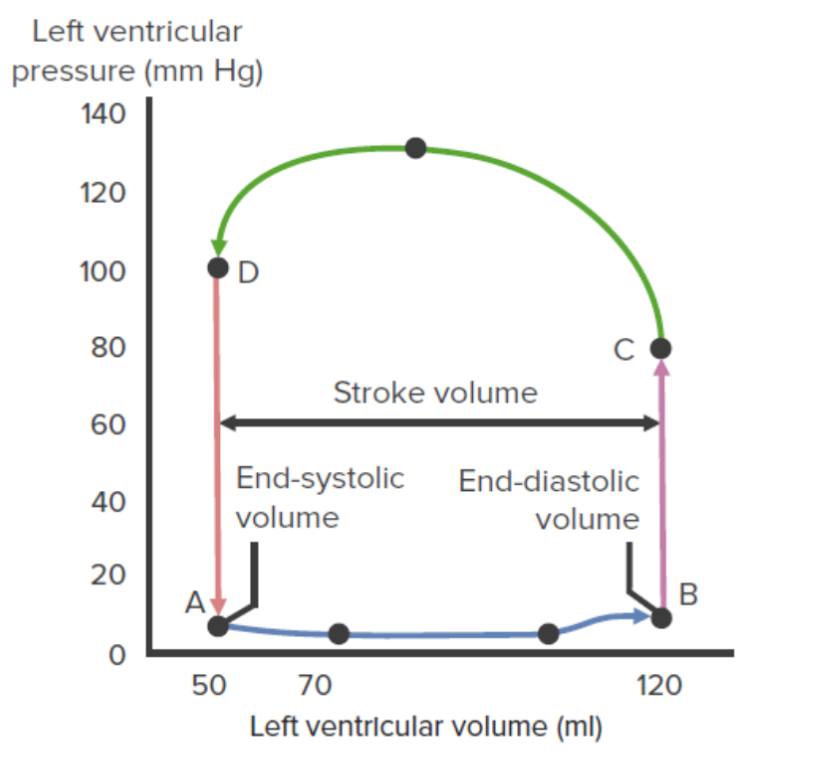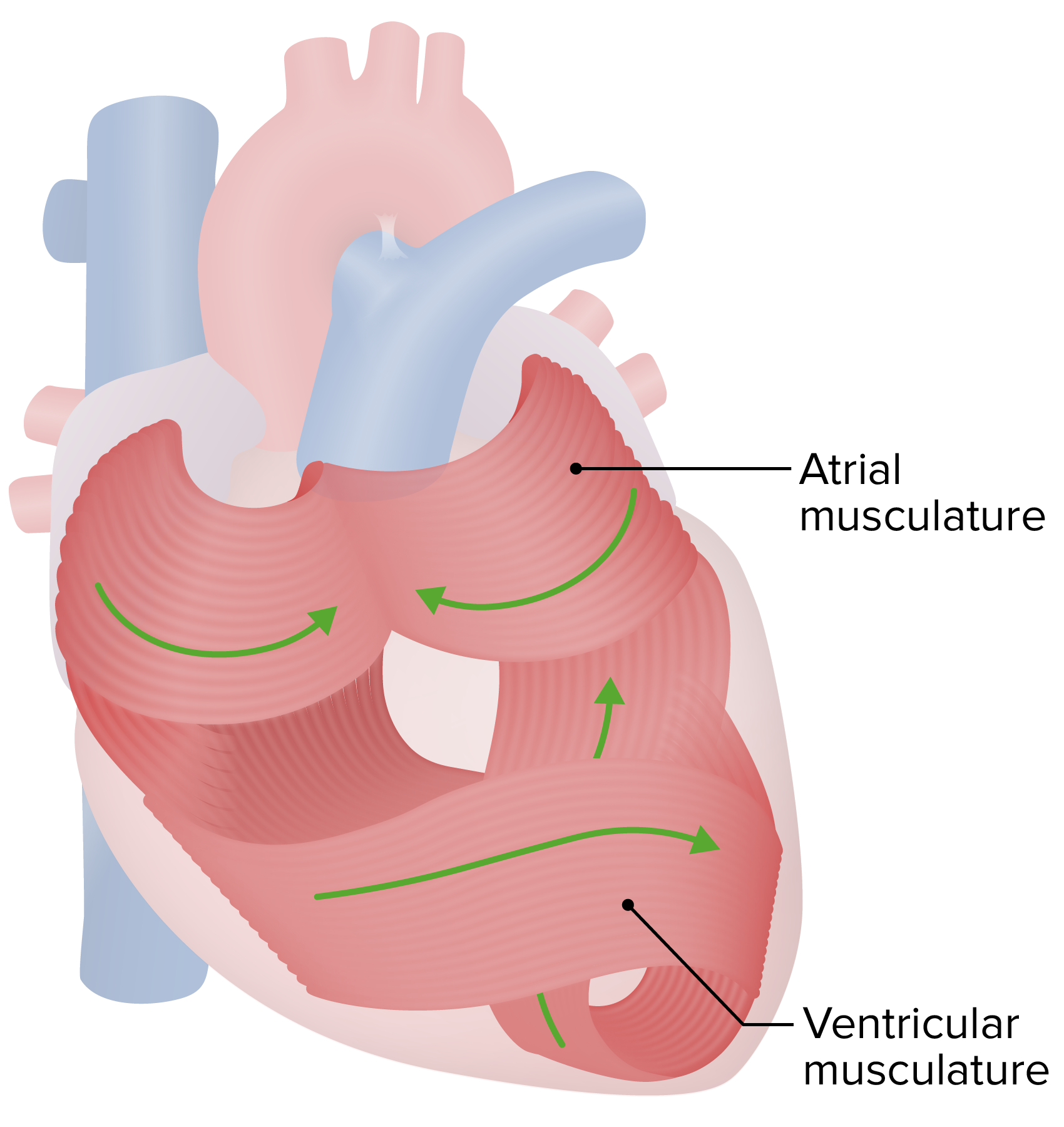Playlist
Show Playlist
Hide Playlist
Cardiac Output, Flow, Pressure and Resistance Theory – Cardiac Mechanics
-
Slides Physiology-Cardiac-Mechanics.pdf
-
Download Lecture Overview
00:01 Cardiac mechanics is the next topic. 00:05 Here, we need to talk a lot about how much cardiac output we have. 00:09 What is cardiac output? It’s the volume of blood ejected by the heart per minute. 00:16 How do we determine what someone's cardiac output is? You take the stroke volume, which is the bolus of blood ejected per stroke times the heart rate. 00:26 The reason why we go through this process is because we have two main variables to alter. 00:33 Chronotropy, or heart rate, governs the pump frequency. 00:38 Stroke volume governs how much push out we have per beat of the heart. 00:45 There are a number of factors that govern the control of both stroke volume and heart rate. 00:50 Some of them are going to be very similar between the two. 00:53 Other ones have some inherent differences. 00:57 Just to go through a few of the stroke volume ones. 01:01 Autonomic nervous system, such as increases in norepinephrine secretion, that will increase contractility, which causes a greater stroke volume. 01:10 Hormones, such as epinephrine, also can feed into that beta-1 adrenergic response and increase the bolus of blood ejected per stroke. 01:20 Interestingly, there are some intrinsic factors, besides nerves and hormones, that can also increase stroke volume. 01:29 And that is the heart has a very unique principle, in which the more it is stretched, the harder it contracts and we’ll go through that in more detail here in subsequent slides. 01:41 Heart rate is governed by both autonomic nerves and hormones, but doesn't have some of those intrinsic factors that stroke volume has. 01:52 So, what constitutes a stroke volume? How do you know how much bolus of blood is ejected per stroke? Well, for this, you need to know what the end-diastolic volume is, Well, for this, you need to know what the end-diastolic volume is, which is the maximum amount of volume that you can have, while the heart is filling? End-systolic volume is the most blood you can push out per beat of the heart. 02:15 You simply subtract the fill from the squeeze and you get stroke volume. 02:23 Now, what factors affect both end-diastolic volume and end-systolic volume? The primary factors that affect end-diastolic volume is a concept called preload. 02:35 Now, what is preload? Well, I will get into that in the subsequent slides, but I want to give you first a quick definition. 02:43 That’s going to be how much filling there is of the left ventricle. 02:47 It’s a little more complex than that, but that's a good place to start. 02:52 End-systolic volume is affected primarily by the afterload and inotropy. 02:58 Afterload is the resistance it's pushing against and inotropy is how hard you’re contracting. 03:06 Now, notice, though, that there are these primary factors, but nothing in the body is absolute or independent of each other. 03:15 And therefore, there are some secondary effects between preload, afterload and inotropy.
About the Lecture
The lecture Cardiac Output, Flow, Pressure and Resistance Theory – Cardiac Mechanics by Thad Wilson, PhD is from the course Cardiac Physiology.
Included Quiz Questions
Which of the following is a primary factor that affects end-diastolic volume?
- Preload
- Afterload
- Stroke volume
- Inotropy
- Dromotropy
Which of the given formulas calculates cardiac output?
- Stroke volume × Heart rate
- End systolic volume ÷ Heart rate
- End diastolic volume × Heart rate
- End diastolic volume – Heart rate
- End diastolic volume – End systolic volume
Customer reviews
5,0 of 5 stars
| 5 Stars |
|
1 |
| 4 Stars |
|
0 |
| 3 Stars |
|
0 |
| 2 Stars |
|
0 |
| 1 Star |
|
0 |
I appropriate how you explain cardiac output!! I did not get it and I did study the chapter many times until I watched you and you made it so easy for me!!!






